To run the forums, host the website, and travel, I charge a universal service fee for my reviews. This review was sponsored by Raleigh Electric Bikes. My goal is to be transparent and unbiased, this video and written review are not meant to be an endorsement of Raleigh Electric Bike products.
For 2019, Raleigh has launched an upgraded version of the Misceo IE. The bike may look familiar to you if you have seen my review of the IZIP E3 Brio. They are essentially the same bike with minor differences, so you will see a lot of parallel information. I will call out the differences (most notably brakes, drive train, display, and price) as we go along. The Misceo IE is a commuter bike packed with features and value while maintain its affordability. At a starting price point of $1,799, the bike comes in 2 frame styles, a high-step and a mid-step (looks like the high-step with a more slanted approach). The high-step comes in medium (18”) and large (20”) sizes, while the step-through comes in small (16”) and medium (18”). At this price point, there will be some entry level components, but what I do love is all the included items they added, there is just a lot of value here and I want to make sure to cover it all. Included with the bike are these plastic fenders which are somewhat adjustable. It might be a little tricky to get them straight but once you do, they won’t rattle much, due to the extra support struts. I like how they are flexible, and they won’t rust if you get them scratched or knocked. Also included is a rear rack that may not be as fancy or streamlined as some of the expensive bikes but does have adjustability to go up and down as well as bungie loops. Its rated to support a nice 55lbs (22kg) and has standard gauge tubing. Battery integrated lights from Fuxon in the front and rear are here as well. I am a big fan of integrated lights and it’s great to see more ebikes include them. The rear light has 1 LED and the front light is mounted on the fork arch, so do be mindful that it may bounce up and down a little bit being mounted there. The headlight has a cut pattern on the top which is designed to aim downward; granting visibility on the road. It is a bit more of an entry level lighting system, so be careful of the exposed wires coming unplugged, try not to snag them. For comfort you got some semi slick Kenda 700 x 45c tires which are a little wider to help that stability. Also, it looks like they went with an adjustable angle quill stem which can help you get the right geometry going. The seat post is rigid, but if you wanted, you could swap it out with a 31.6mm equivalent to add some extra comfort. And of course, there is the front suspension fork. The fork is a SR Suntour NVX which is an upgraded fork versus the Brio that is a bit adjustable via preload configuration and features 75mm of travel. Running down the list, you see a lot of other features offered as well. I love the bottle cage bosses and the rack bosses in the back in case you want to customize it with your own setup. A rear mounted adjustable length kickstand is here too, nice and out of the way so you don’t get that pedal lock when reversing. Even the disc brake caliper is mounted down rather that up higher, it keeps the cables clean and out of the way of the rack. The battery mount is stepped down a bit giving you that extra room for that bottle cage. Wires here are internally routed and make use of this neoprene wire binder which adds to the clean minimalist look. The bike is fairly lightweight at 55lbs, not bad. Other features include an integrated bell, plastic slap guard sticker, Wellgo plastic pedals with a fair bit of traction, and non-locking ergonomic grips.
Driving the bike is a compact geared hub motor from SR Suntour that is “torque activated”. The official website says that it measures pedal torque and cadence at the bottom bracket, and I assume that rear wheel speed is also being measured. This is pretty fancy for an entry price point product and offers a smooth natural feel. Many competing hub motor systems feel abrupt and cut in and out without that smoothness. Motor output is claimed from 250 to 400 watts with up to 60 newton meters of torque, and it was noticeable and helpful during my test climbs. It doesn’t produce a lot of noise, even in the highest level of assist. Overall, it’s a compact and lightweight piece of hardware that freewheels efficiently and won’t drain the battery super quick, like many of the higher-powered hub motors out there. This is a benefit when you consider the lower capacity battery pack. Together, they both keep the price down and reduce weight. For the drivetrain, Raleigh opted for the higher end 8 speed Shimano Altus derailleur and a 11-34 tooth setup, a lot nicer than that of its sibling, the Brio. At the pedals there is a 42 tooth chain ring with a plastic chain guide which will keep the chain steady if you happen to hit a bump or something. Stopping the Misceo is another upgrade from the Brio, Tektro 180mm hydraulic disc brakes with 2 finger Tektro adjustable reach levers on the bars. The hydraulic brakes here are a big win for me since they provide immediate stopping power without extra hand actuation.
Powering the bike is a 36v 11.6ah lithium-ion battery pack from Joycube. At least, that’s what the sticker said. It’s part of the SR Suntour drive system, which is a more widely recognized name. Suntour makes drivetrains, suspension forks, motors, and perhaps the battery is a joint venture? In any case, the capacity is below average for the 2019 season, but should be enough to go at least 25 miles, even in the highest level of assist. This is because the Raleigh Misceo IE is a Class 1 pedal assist product, that makes you engage and help out. It compliments your pedaling, actually measuring torque output and not just pedal motion. I’d consider it a more active ebike for this reason, one that doesn’t just take you along. I love how the battery pack looks, how it’s positioned low on the frame and actually set onto the downtube a bit. This battery has a 5-bar LED charge level indicator built into the top (each bar represents a 20% step) and circular charging port on the right side. You can charge it on or off the bike, and the key is a fairly generic TKM with locking cylinder. I mention this, because some higher-spec’ed IZIP and Raleigh products use ABUS locking cores that can be keyed-alike to some locks. The battery slides up and out, but be careful, there is no real handle to the battery here, so I could see it dropping after popping it up and out. It has stickers that tie it into the paint job of the bike, and it weighs about 5.5lbs, which is fairly light. Charging the bike is done with the 2amp portable charger. I noticed the port may not be in the way of the crank arm (which is good), but it is somewhat close to it, so be careful not to snag the wires with the pedals while charging. To really care for this and other lithium-ion packs, I have heard that storing in a cool dry location vs. extreme heat or cold will extend the life and try to keep it about 50% full when not using for long periods so you won’t stress the cells. Try not to let it run down to zero, because that’s really hard on the cell chemistry.
Activating the bike is straightforward, once the battery has been charged and mounted to the downtube. Make sure the pack is clicked into place, then remove the key, and press the power button on the battery, then on the display. Within a 24 hour period of using the bike, you only have to press power again to turn it on via the display. But after 24 hours, the battery goes into a sleep mode and you will have to turn it on again before turning on the display to activate the bike. The display here is a nice upgrade over the Brio, since it has live readouts as opposed to just a couple of LED indicator lights. This display is grayscale, easy to read, and removable (one of my favorite features in a display). It also has an adjustable angle to it, but sadly, no USB ports for charging any devices. When you turn it on, you will see a very basic 4 bar battery infographic, but do not fret, if you press the ‘i’ button, it will give you a battery percentage readout! This is another favorite of mine on certain displays because it leaves the guess work out of how much battery you have left when 1 bar could be 25% or 1% which is a big difference. Anyway, the display has readouts for current speed, total distance, trip distance, and even has a walk mode. Something to note is that the bike defaults into TOUR mode when you turn it on. Also, CLIMB mode has a feature where the climb word flashes if you are over-heating the motor on a tough accent. Pretty cool! The light button turns on and off the lights and you can change the MPH to KPH by holding ‘i’ for 5 seconds. All in all a welcome upgrade with the battery percentage readout and having it be removable as well.
The Misceo IE really has a lot of value for an entry level priced bike. To keep the cost low, there are going to be some tradeoffs so let’s go over those as we conclude. During the test ride on the sister bike, the Brio, the wires that plug into the front headlight came unplugged when taking a tight turn. Now this could be do to all the jarring around earlier as the demo bike was taken from photoshoots and ride tests from others. The final product may produce better results, but it does have to be said. The battery on this model comes out by pushing it up, something that worries me since there is no real handle on the battery so it could drop to the ground. The largest tradeoff is the motor being pedal assist only. The torque sensor is nice and gives the bike a natural and smooth feel but can take a bit of effort to get going which could hinder you starting at the bottom of a hill or other tricky situations. All things considered however, you do get quite a bit in return. Having a throttle-less bike keeps it as a Class 1 ebike, opening up the ability to ride on more trails. Additionally, having a pedal-assit based system makes for a more active and engaging ride, great for those who want to still want a small bit of fitness to go along with their speed. The bike also comes 95% assembled, is light weight, and is backed by a dealer service network and US toll free customer support. But the big win here is the price point. At $1,799 it’s quite tempting considering you get an ebike with a lot of features and a clean minimalist look.
As always, I welcome questions and feedback in the comment section below. Whether you own the bike, have taken a test ride, or are brand new to the space, my goal is to provide an objective and honest resource. You can also join the Raleigh Ebike forums and share your own photos, videos, and review updates to help others! Have fun out there, and ride safe :)
Pros:
- An affordable and lightweight commuter with a minimalist look and an SR Suntour rear hub motor, two frame styles, three color options, and an entry level price point
- The drive train of the bike features a Shimano Altus derailleur with a 11-34 tooth system, and 180mm hydraulic disc brakes which offer great stopping power
- The battery is removable, can be secured with lock and key, can be charged on or off the bike, and has an LED readout showing charge level in 5 separate 20% increments
- Since the bike is torque based pedal assist only and does not have a throttle, it is classified as a Class 1 e-bike and therefore grants more access to more trails and paths, the torque based pedal assist is smooth and natural and keeps the active feel of bicycle riding since the user is without a throttle or cadence sensor
- The SR Suntour hub motor is small and helps keep the bike lightweight overall at 55.1lbs, has multiple modes of pedal assist, and still manages a smooth and natural feeling
- Display is a big win for a value priced ebike, it is not only removable, but has the ability to display battery percentage left rather than just a few ticks to go by
- Little style touches here and there really bring the bike together, for example, neoprene wire binder, color accents on the bike follow through on the battery, and the internal wiring really give it a sleek and well thought out look
- The Misceo has a lot of other thoughtful touches that include a front quick release, integrated lights, intergraded bell, bottle cage bosses, and an adjustable kickstand
- A great competitive price point for those looking to get into a electric commuter bike while maintaining affordability, priced at $1,799, perfect for someone who wants to try out an e-bike to see if it is right for them
- The bike comes 95% assembled, includes a dealer network for support, and has US toll free customer support
Cons:
- Battery removes by pushing it up and out of the mounting position, not a big deal normally, but this battery has no real handle so you could pop it up and out and have it land on the ground if you’re not careful
- Not having a throttle or cadence based assist means you could be having to pedal a little harder to really get it going, something that could intimidate a less confident rider starting out on a hill
- Entry level or more basic parts are used in few places, some riders will notice the plastic pedals, plastic chain guard, and grayscale display, but most of these were placed to keep cost savings in mind, making for an inexpensive electric commuter
- The new display is a welcome upgrade from the Brio, but sadly there is no USB charging port to charge other devices anywhere on the display
- If you are looking into an ebike for therapy or rehabilitation, having only a torque based system could be difficult based on your needs as a patient since you may need to exert a little more force to get going and maintain, for those accustomed to conventional bicycles, it will feel fresh and speedy, but maintain a sense of fitness
- During my video review of its sister bike, the Brio, the wires to the headlight came unplugged during a tight turn, this was a demo bike, so they may just be problems unique to the one I was testing, but do be mindful of these things when working with your own
- The front headlight is mounted to the arch of the fork, which could make for bumpy lighting conditions in certain terrain
Resources:
- Official Site: https://www.raleighusa.com/electric

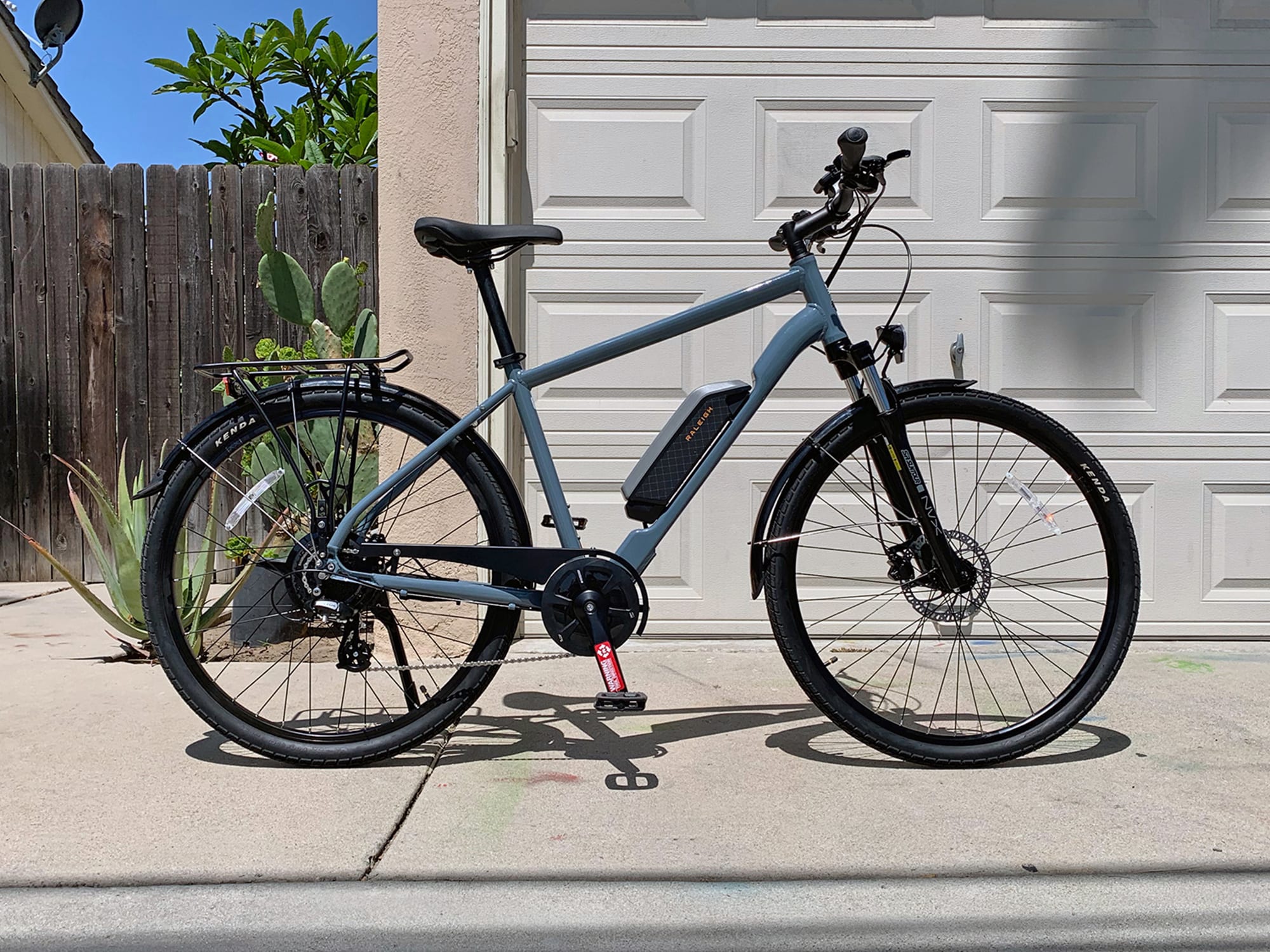
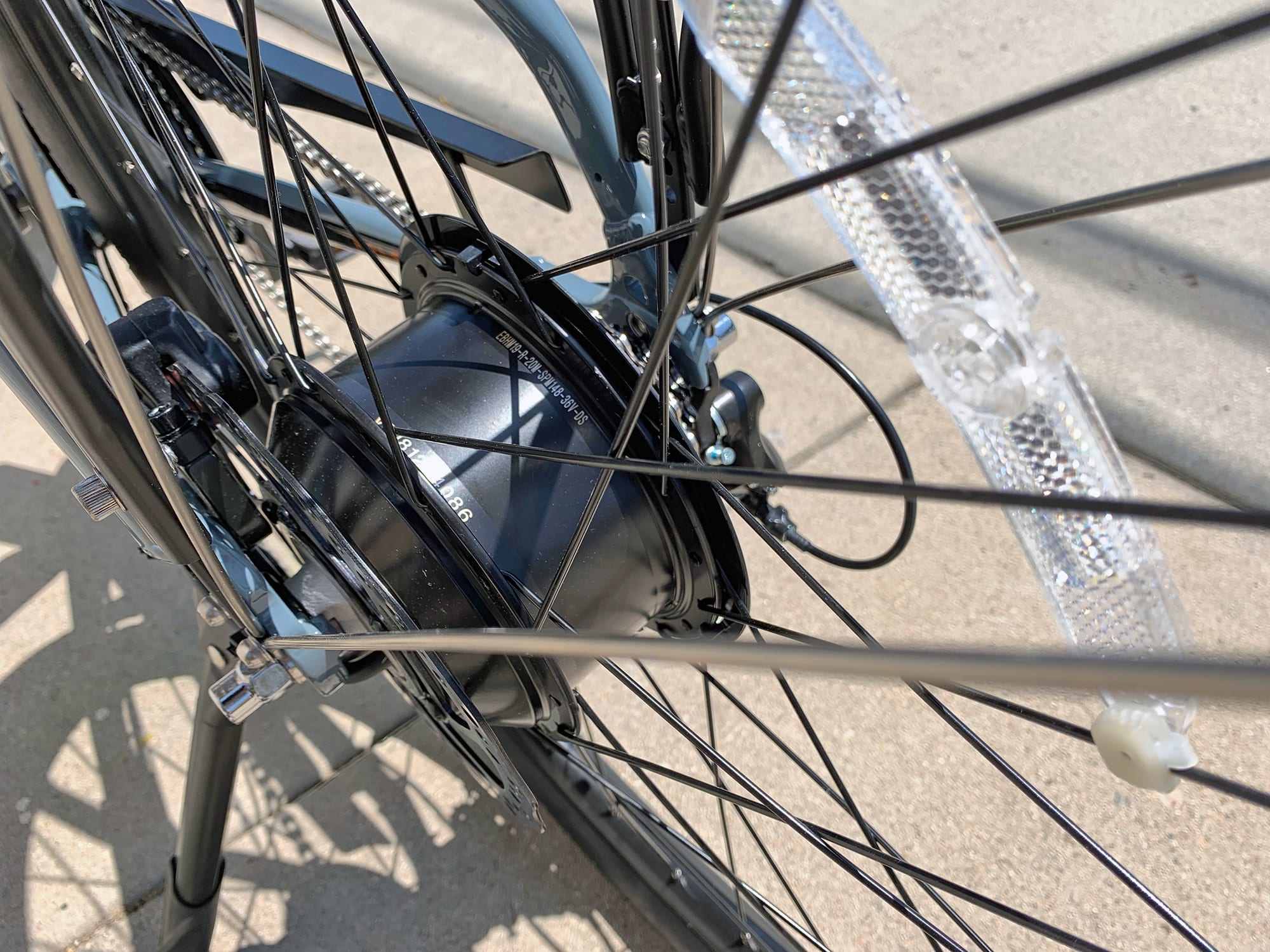
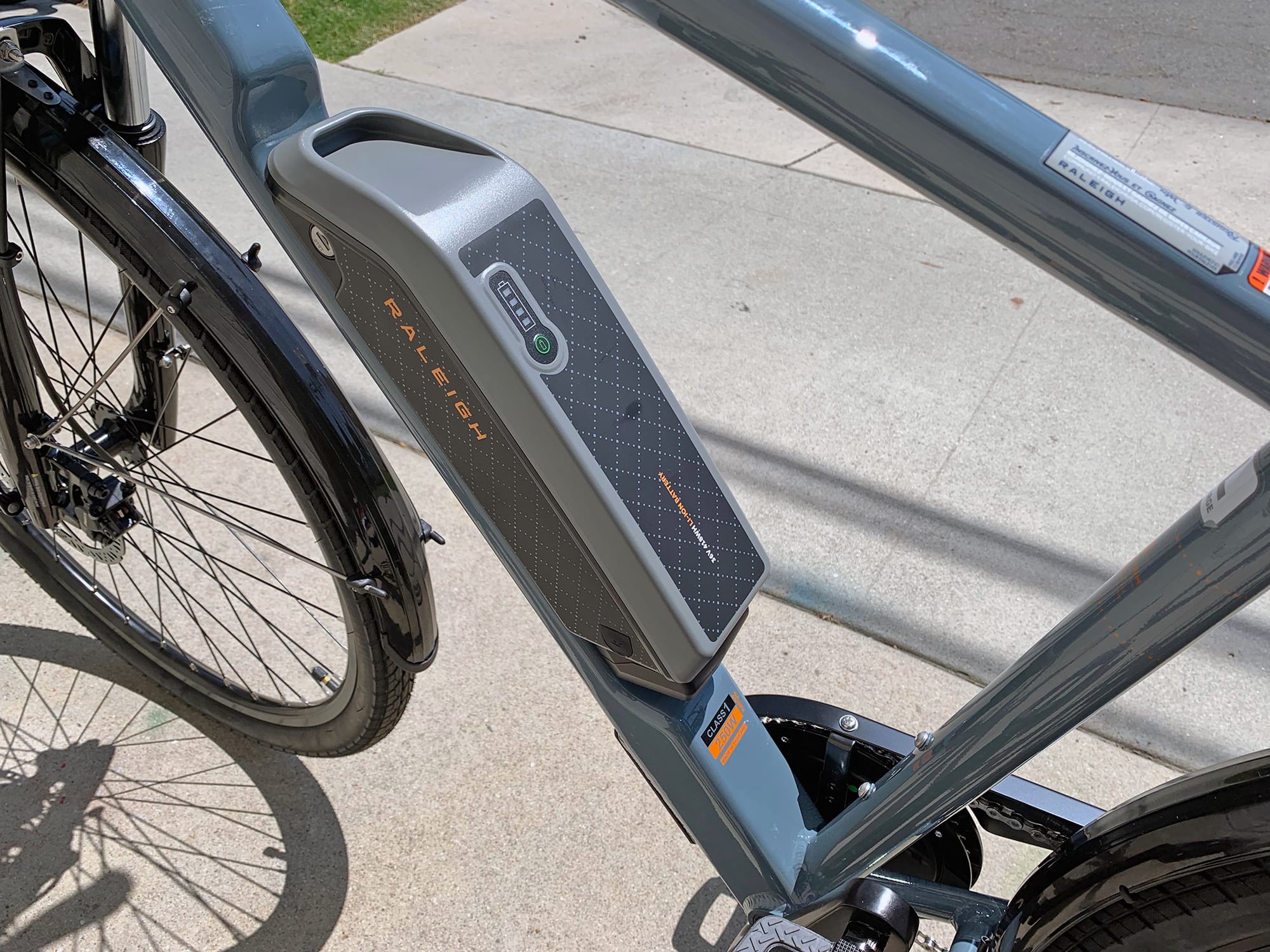

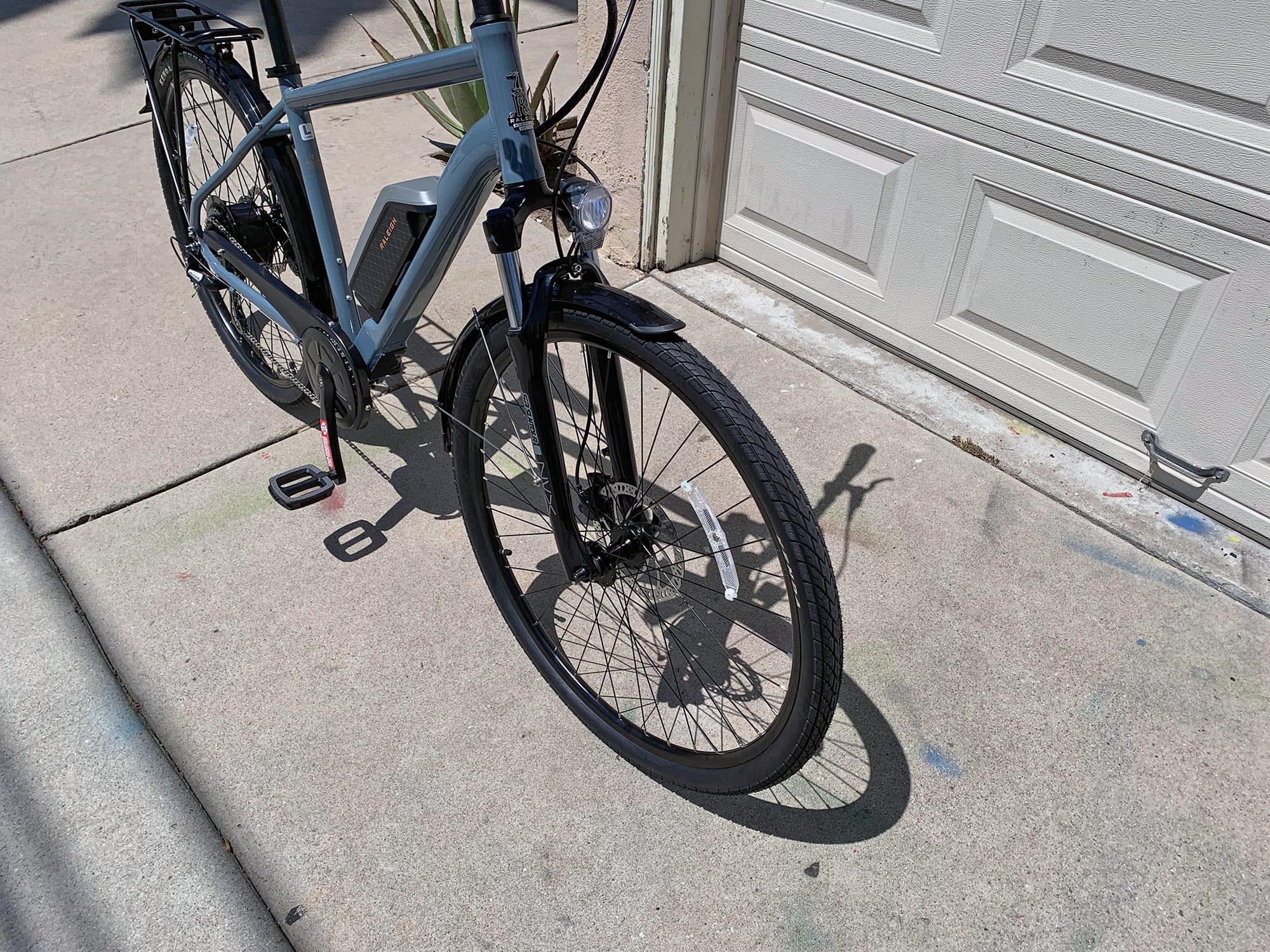
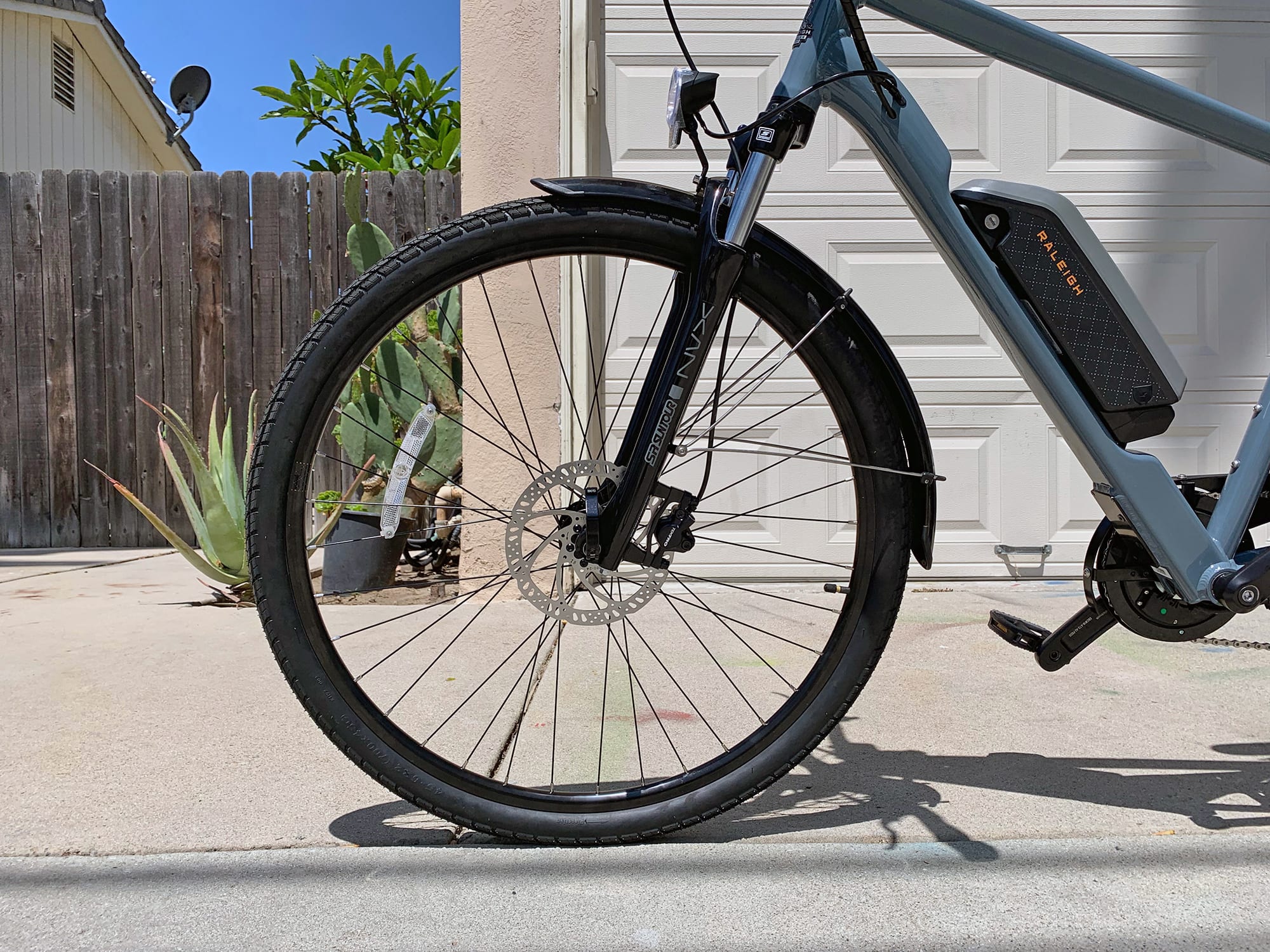
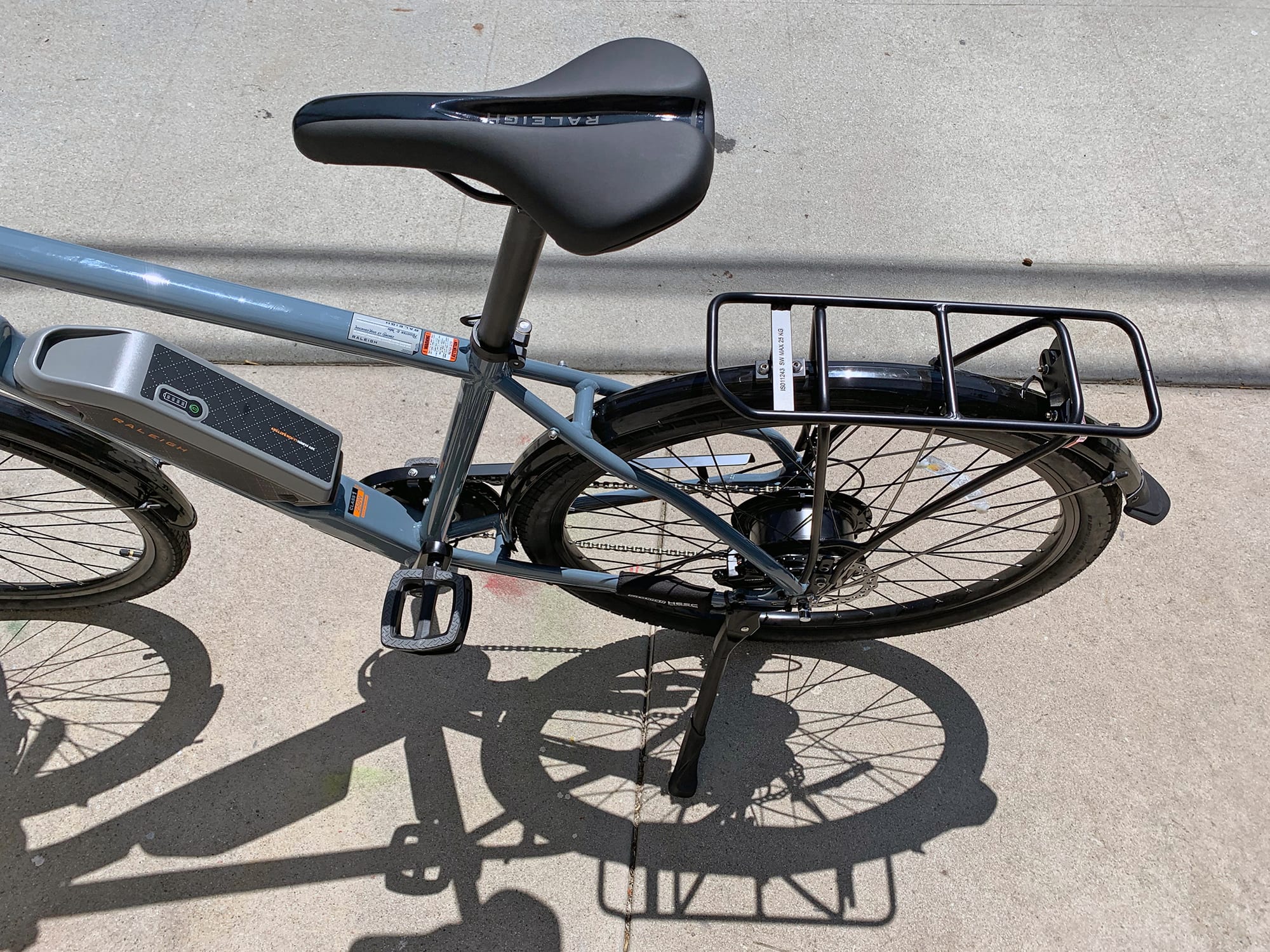

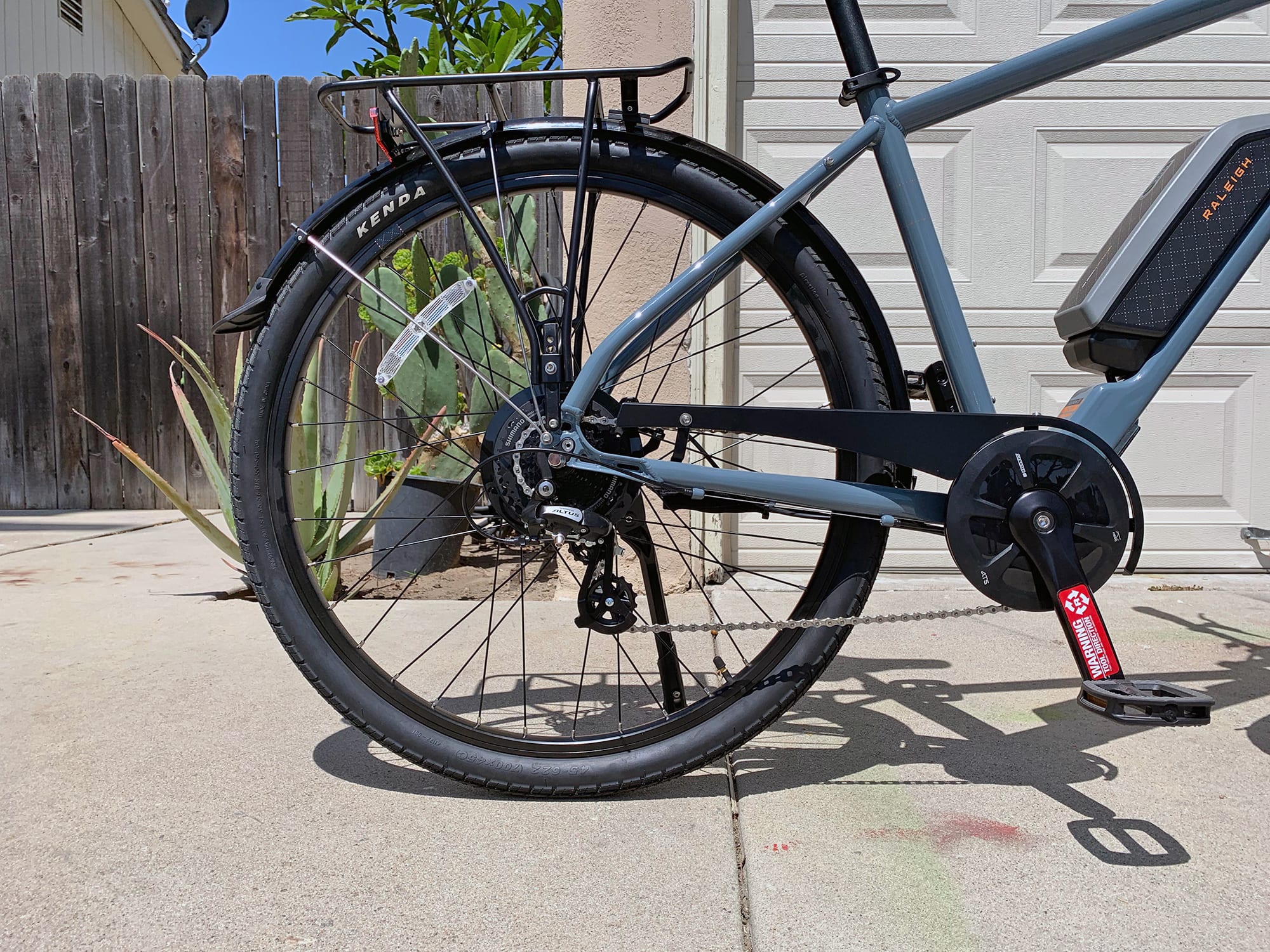
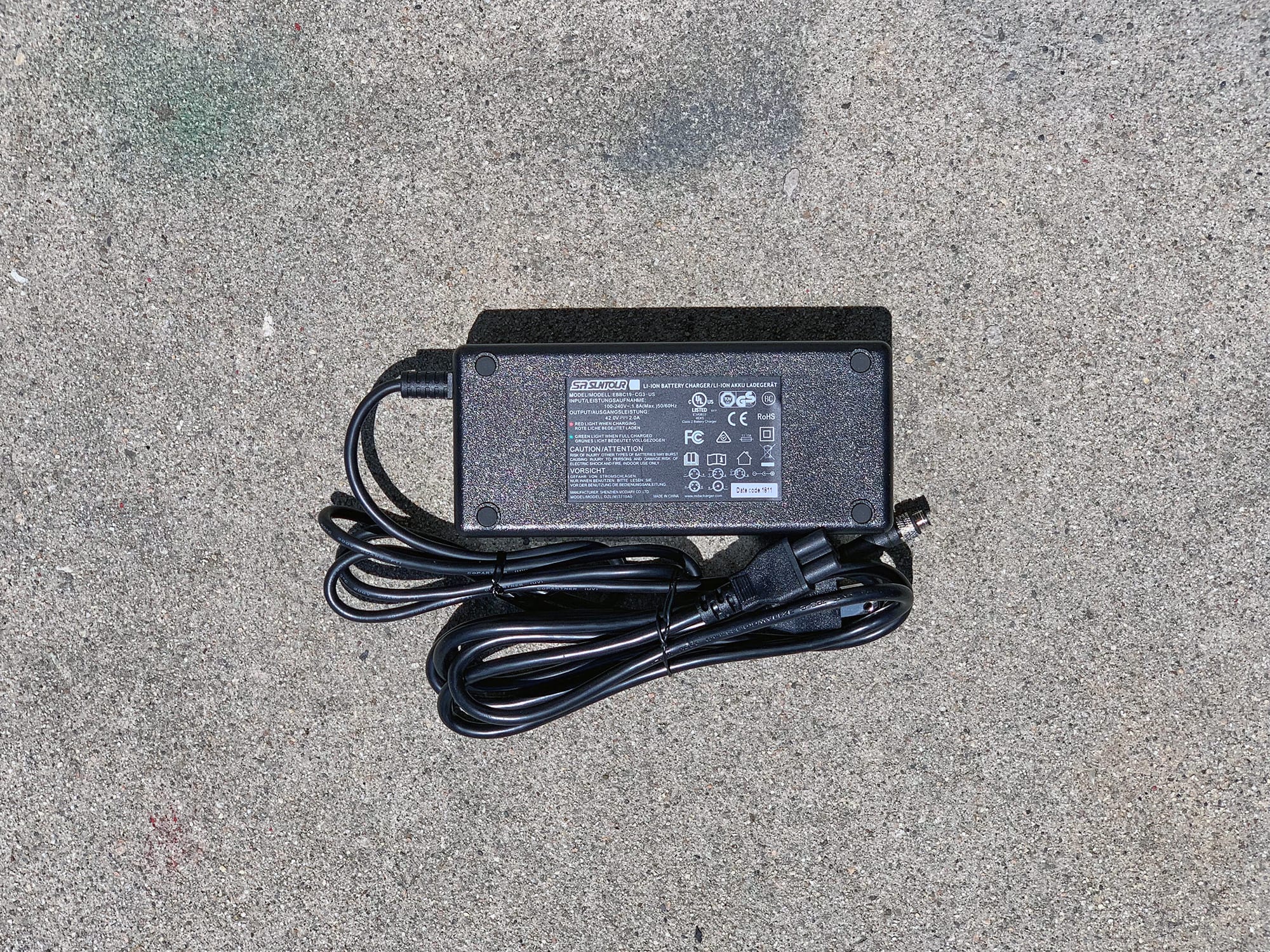
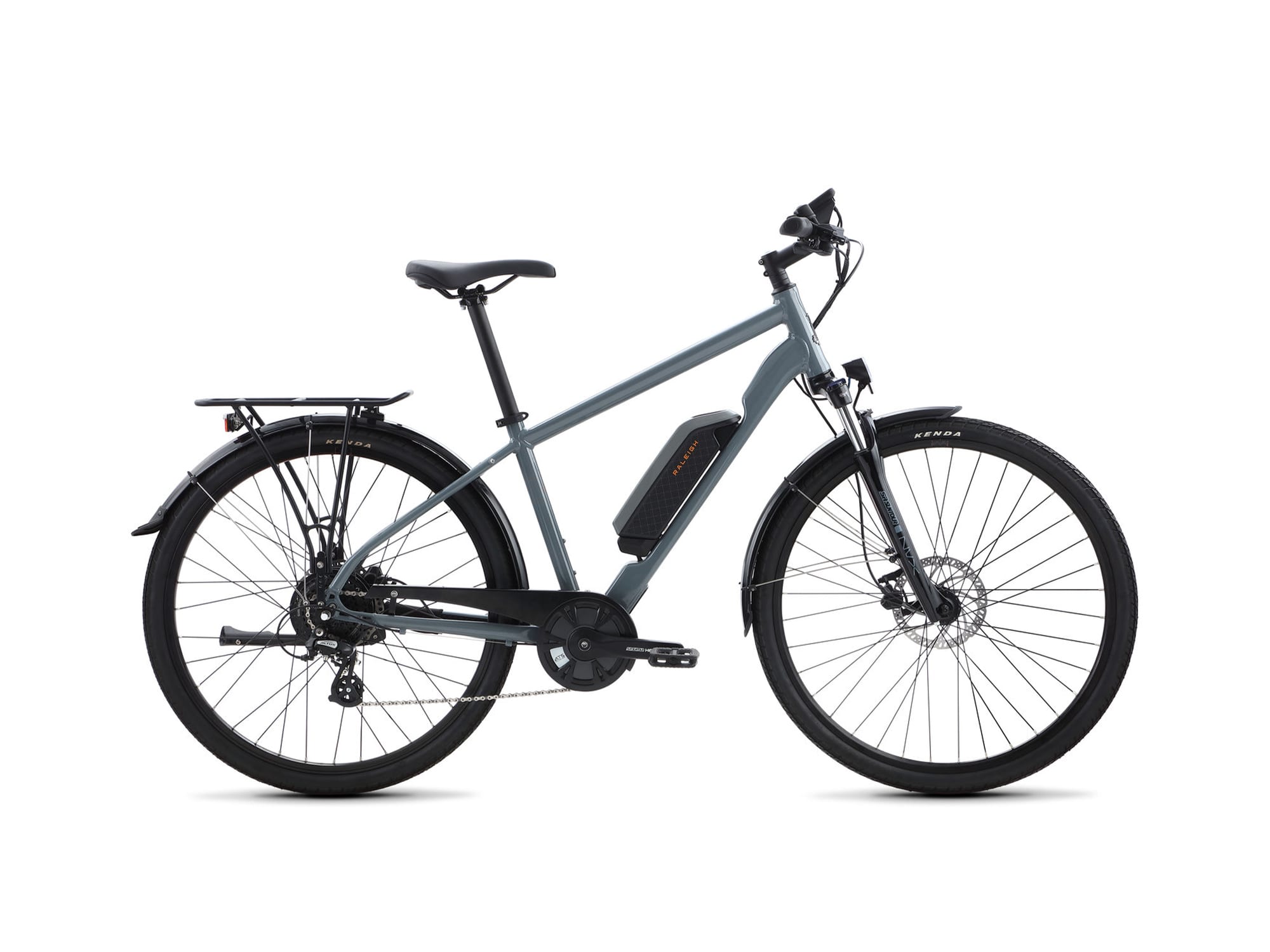
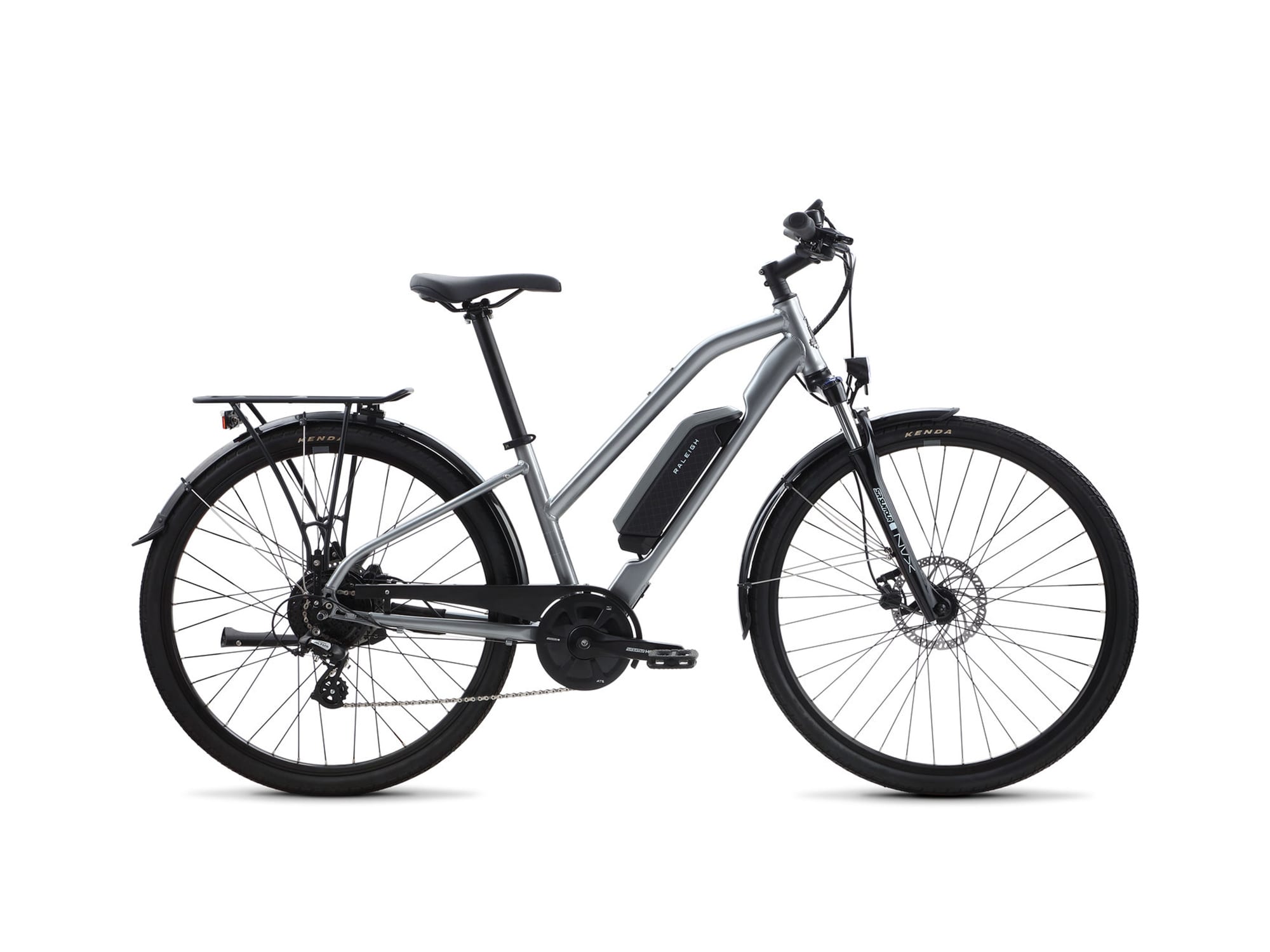
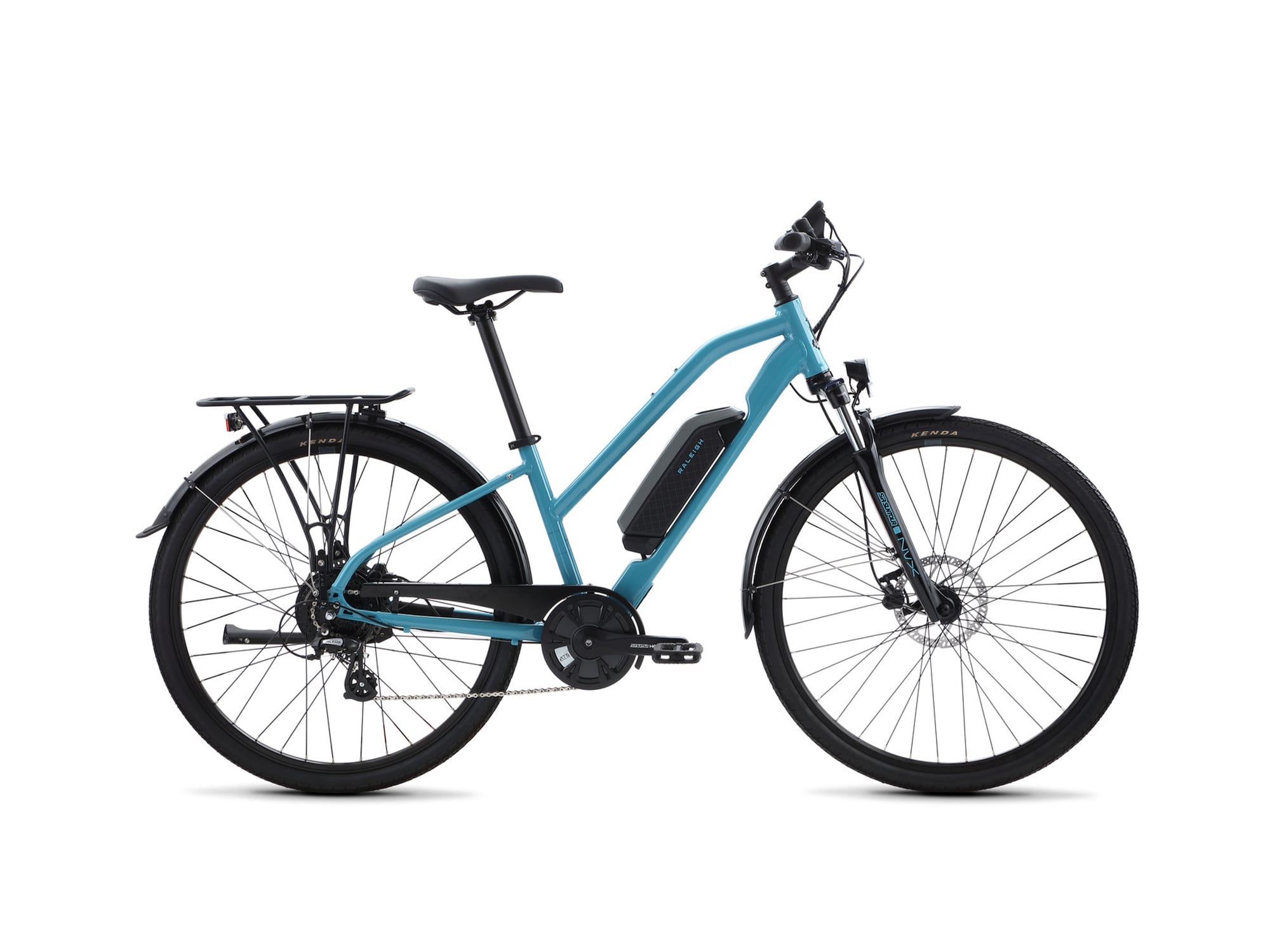

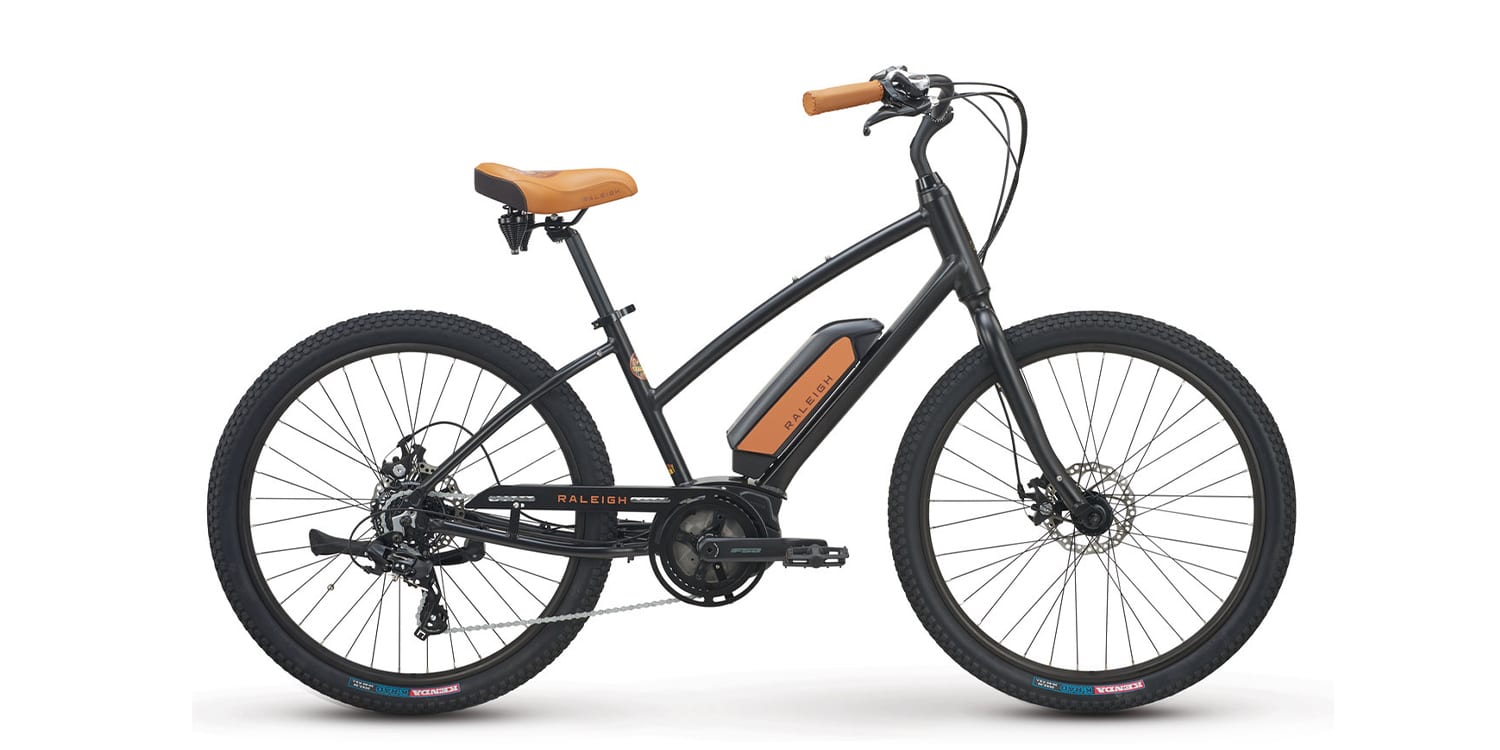
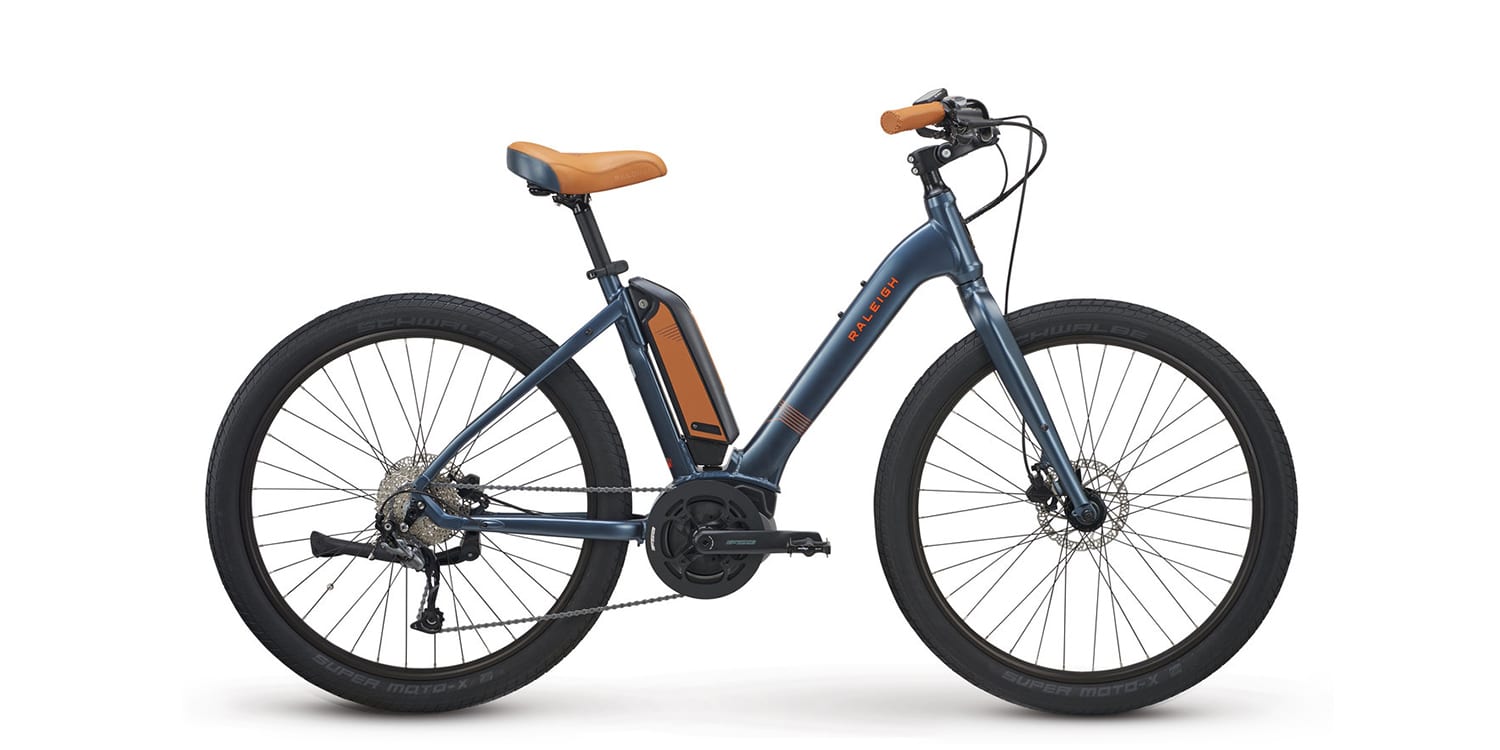
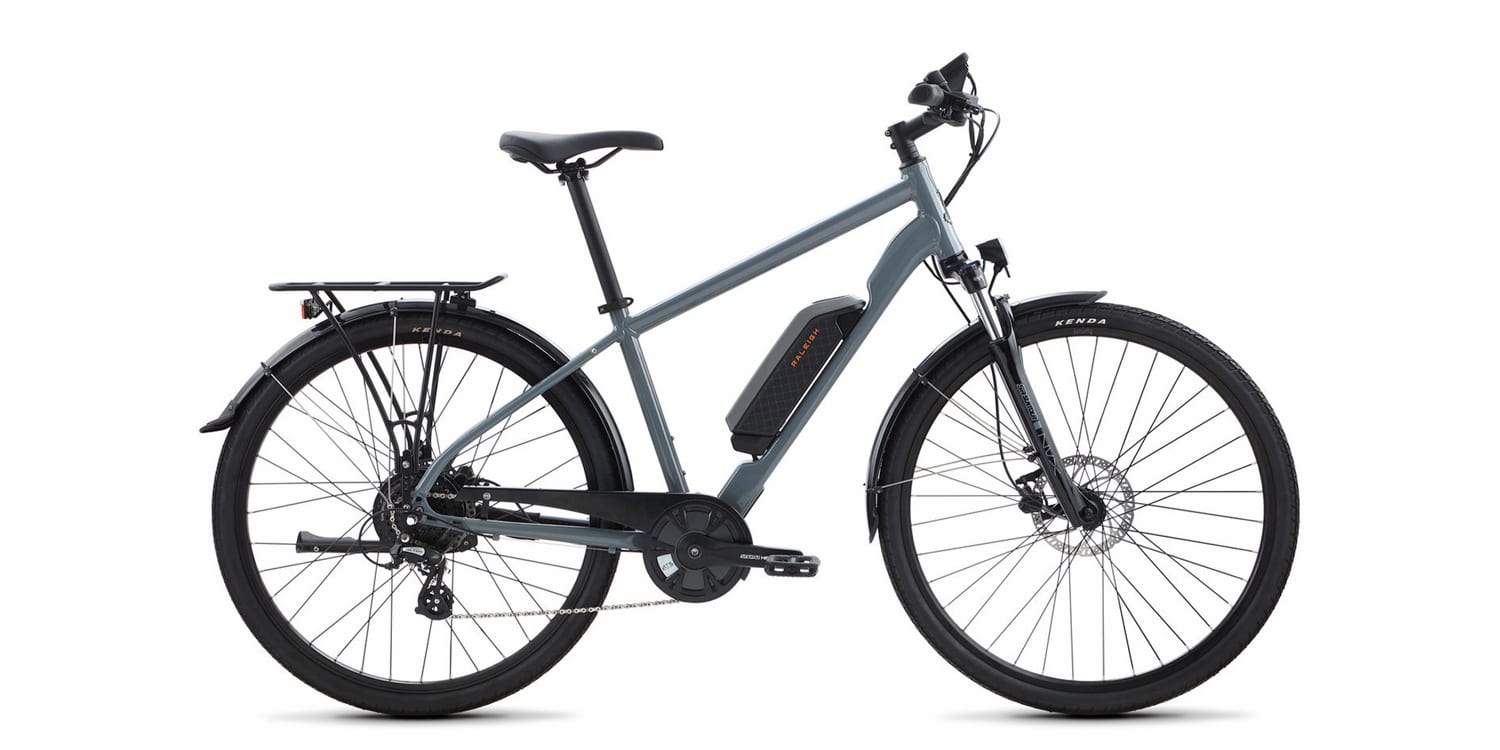
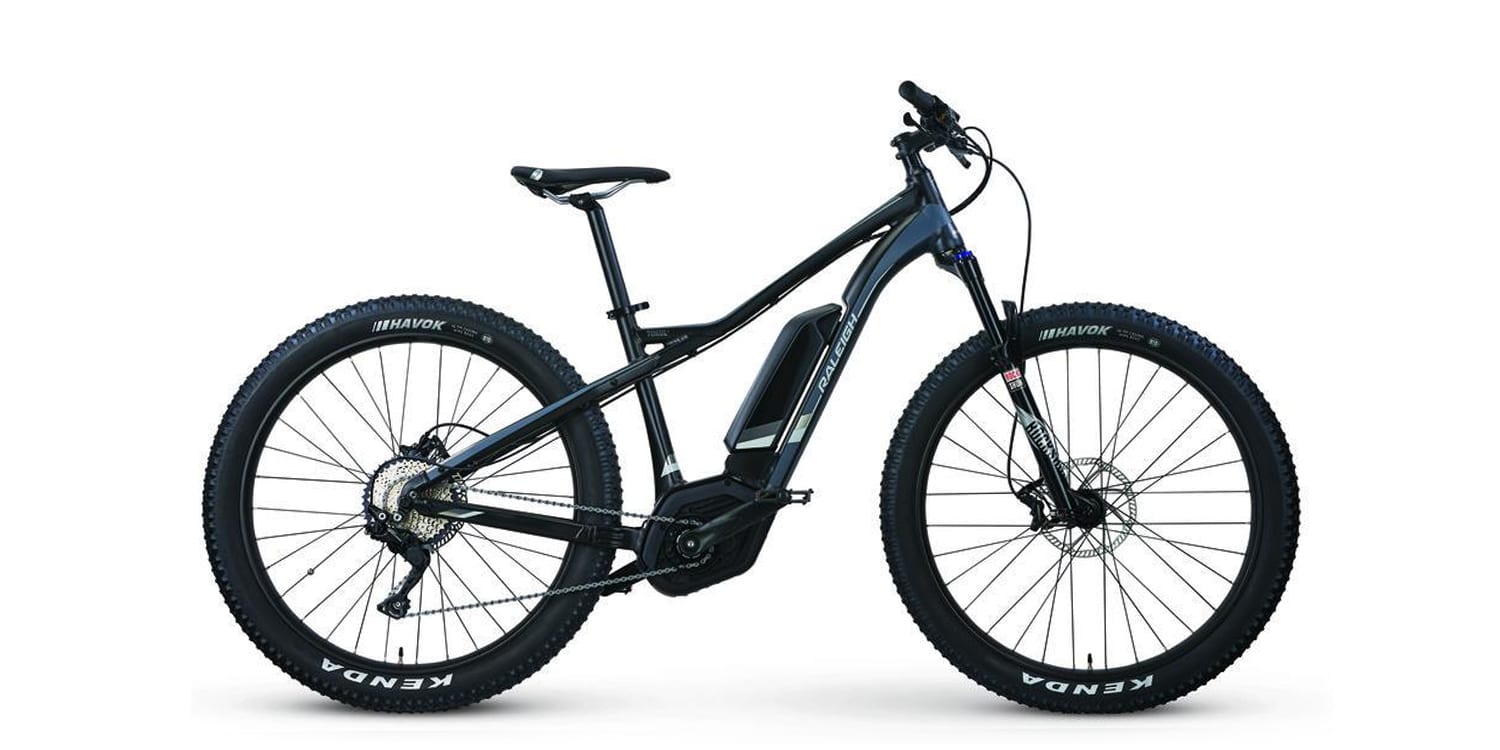
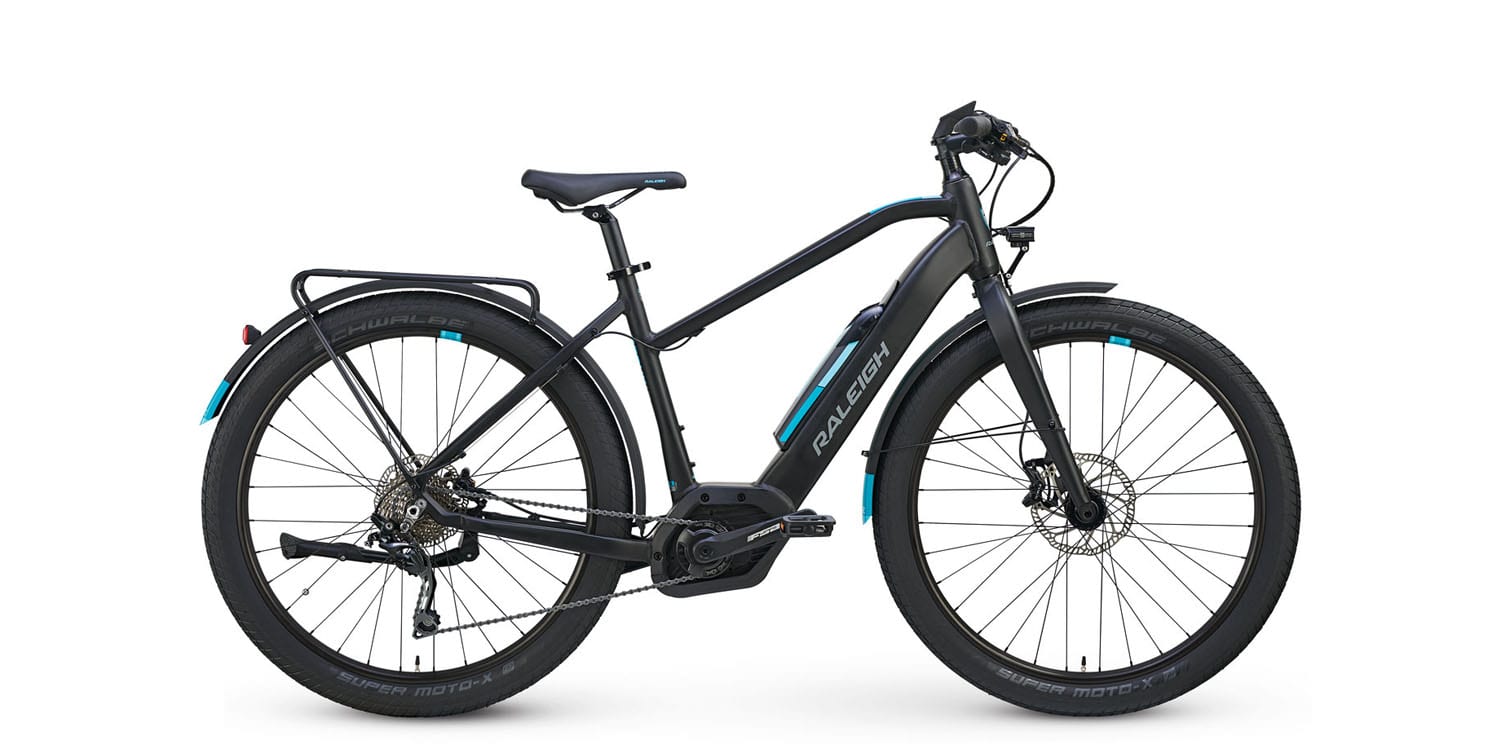
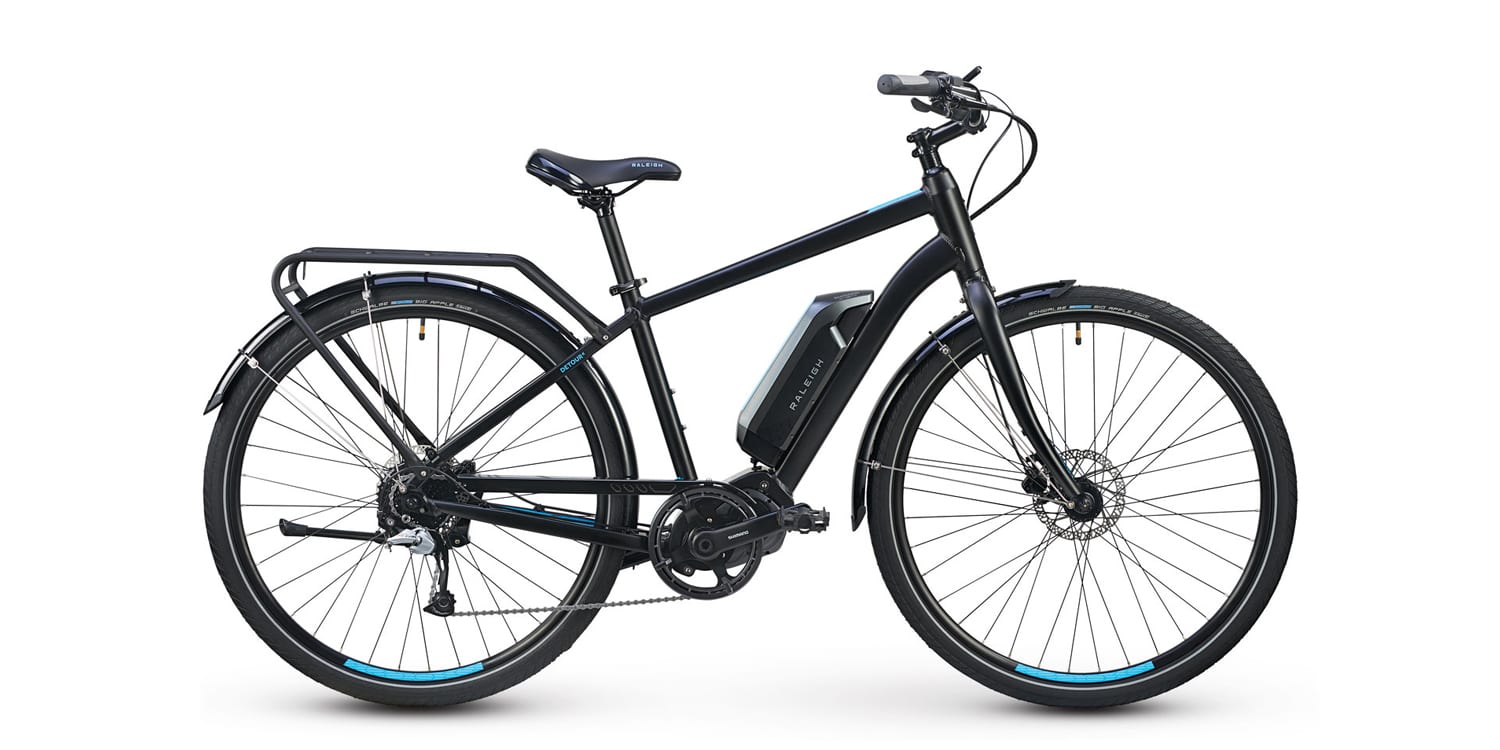
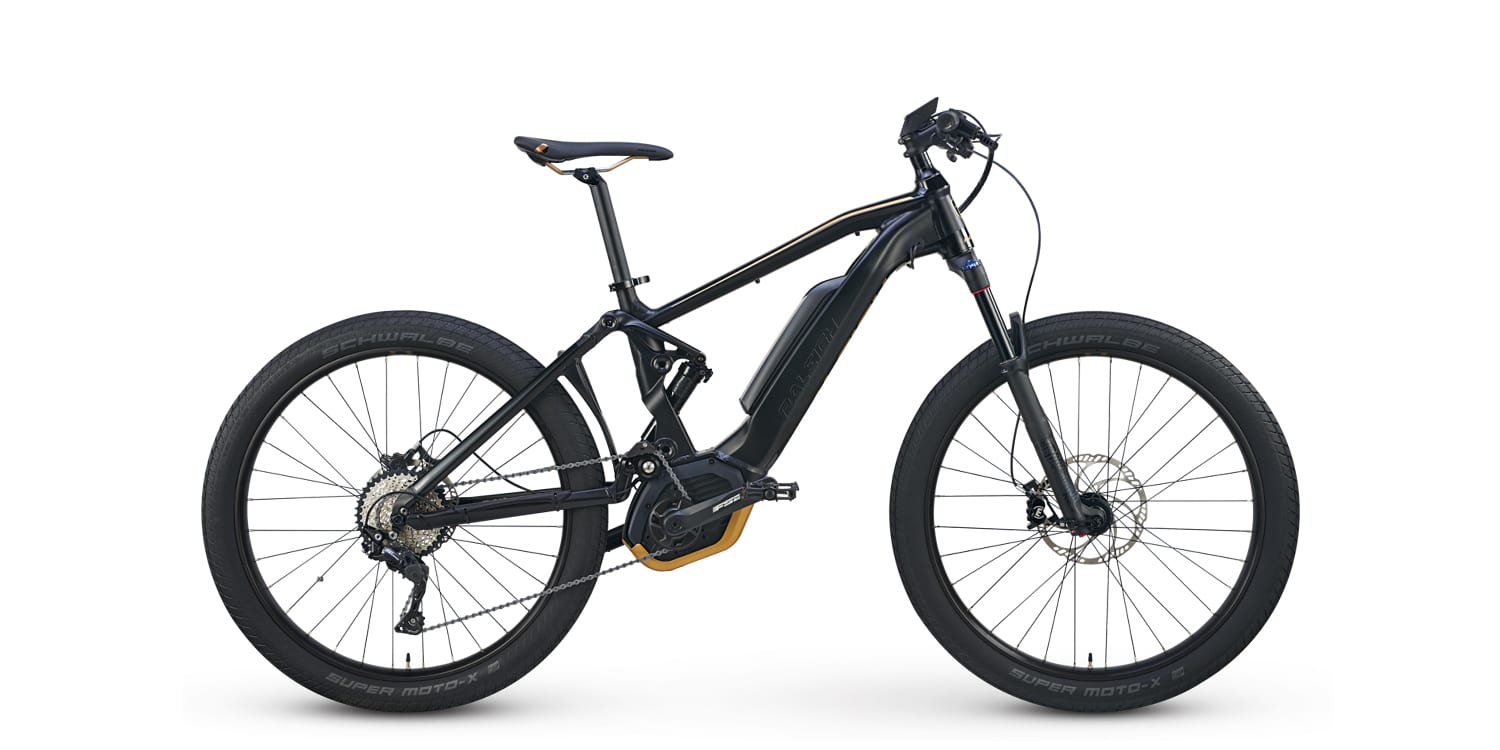
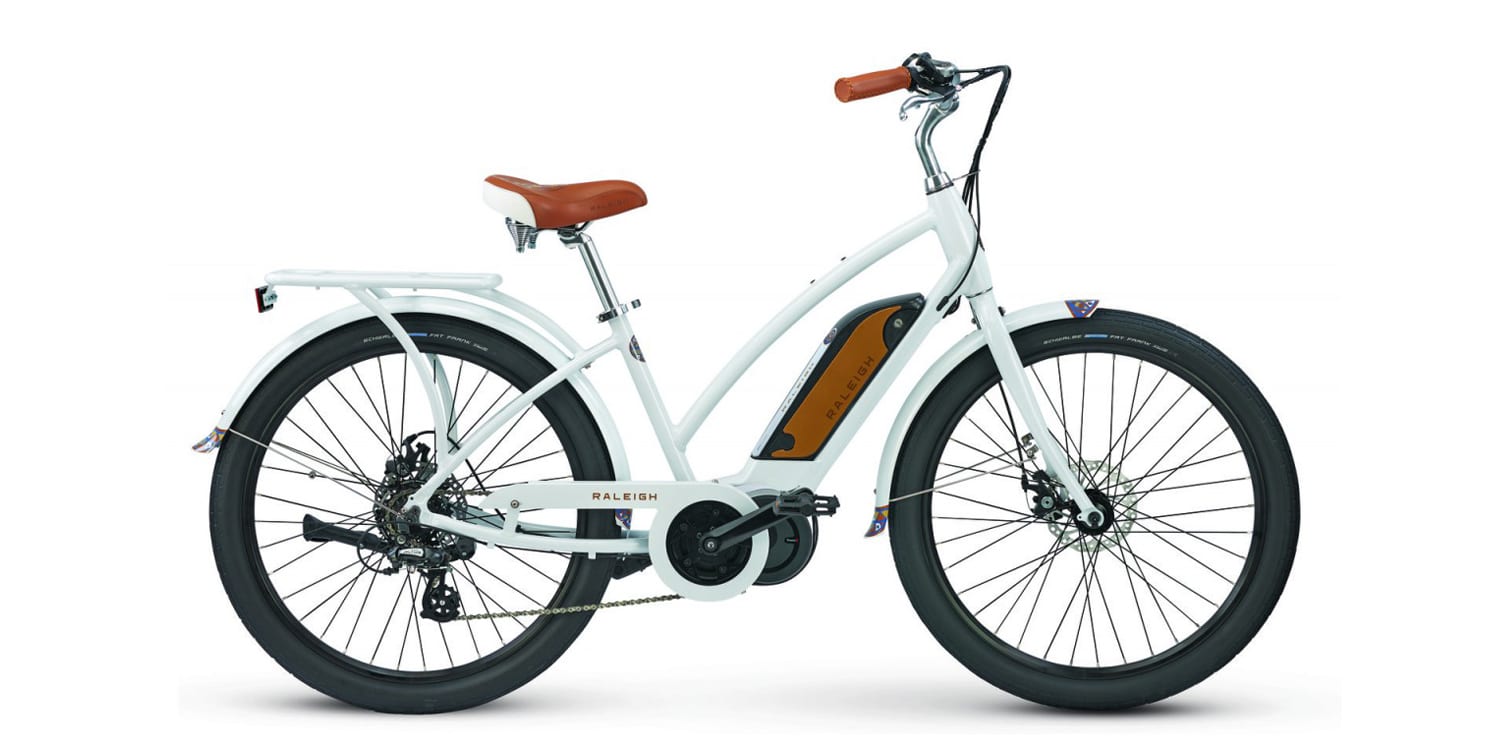
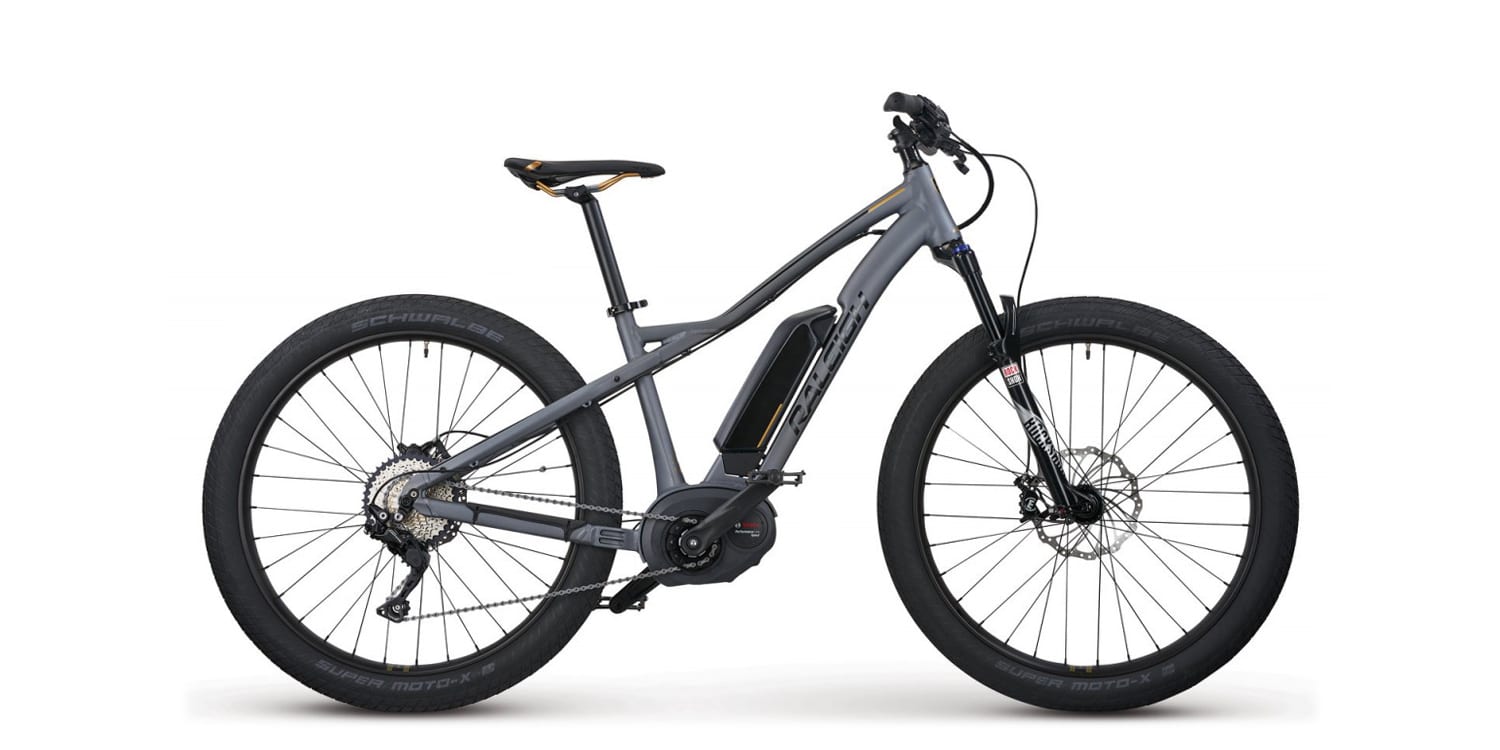
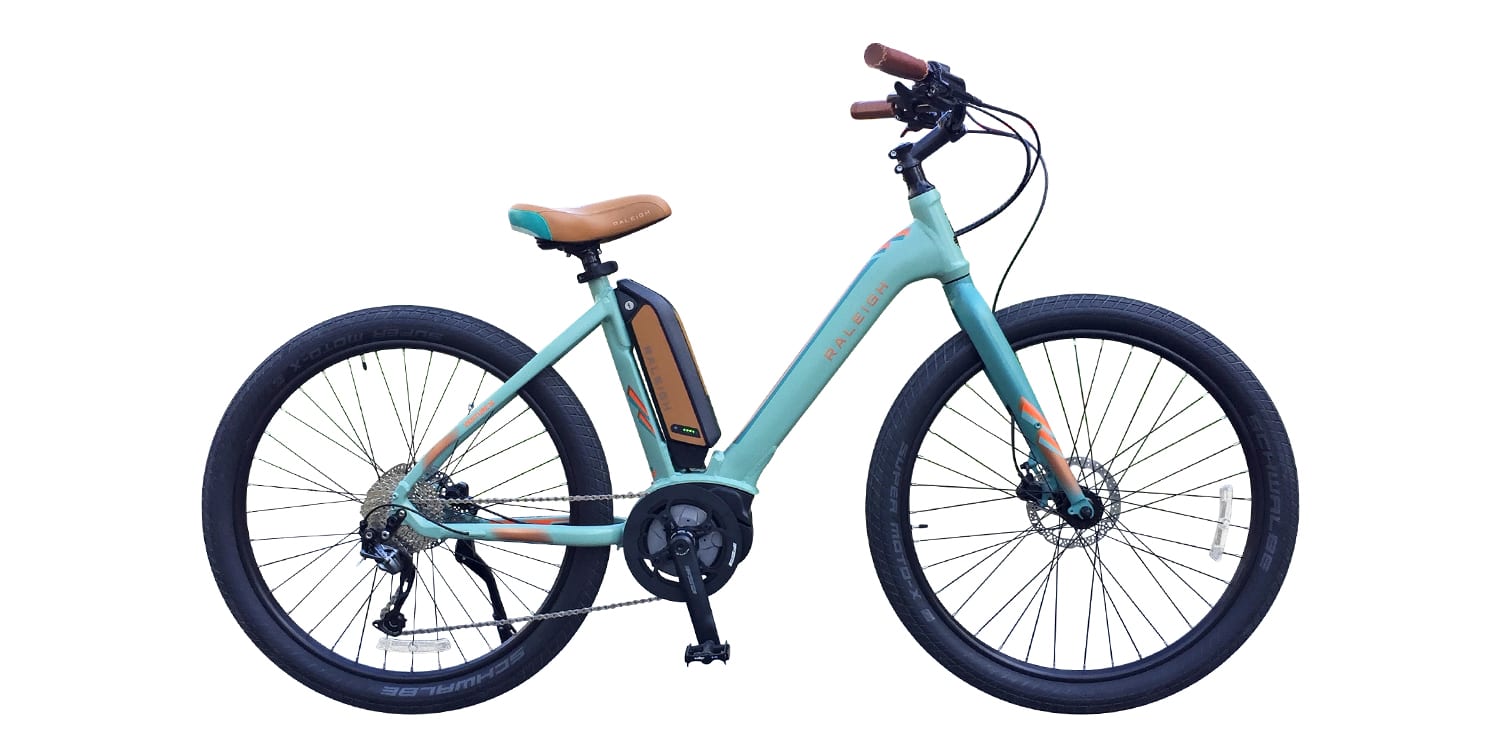
Shane says
My local bike shop has one of these on sale for $2100 CAD. My commute is pretty short at about 6 miles but includes a really steep hill most people have to walk their bikes up. I don’t know the grade but do you think this bike could handle just 1 super steep hill in it’s lowest gear? I’d probably just use it at a minimum assist for the rest.
Court says
Hmm, that’s a great question. It may come down to using that low gear, having some momentum, and just pedaling. I feel pretty confident that I could climb any of the hills I’ve encountered in San Francisco (pretty steep) with this ebike given my fitness level and relatively lightweight body (I weigh ~135lbs) but I can’t speak for others. I hope that provides a bit of hope… and yeah, if you can get a good deal on it. Maybe just test ride it and see if there’s a slight hill nearby. Gears and momentum really are your friend on any ebike with hills ;)
Shane says
Thank you for the detailed response. If it can handle San Fransisco hills, I think I’ll be fine.
Court says
Good luck, Shane. I’d love to hear your honest feedback if/when you buy and use one of these bikes in your area :)
Bob Atighechi says
Hi there, I just purchased this bike, the Misceo iE, directly from Raleigh, to make the long story short, the battery came completely empty, and when I put the serial number in, it said production date of 2011! can that be correct? do I have a bad battery?
Court says
Hi Bob! I have no way of telling what year the bike or battery was produced… or how Raleigh Electric handles their software vs. hardware. It could just be that the software they used was produced in 2011. I’m really just guessing, but charge cycles is one of the biggest factors on any lithium-ion battery. Age makes a difference, but if the pack was stored at roughly 50% and kept in a cool dry location vs. extremely hot, it should be fine and have lots of life. It sounds like perhaps the battery drained down to zero during its time in storage, which isn’t ideal, but give it a charge and see what kind of range it offers before getting too worried ;)
Bob says
Thank you for the prompt reply, just to be more clear the battery pack’s serial number was what I entered on SR Suntour’s site, it said manufactured date 2011.
Sanders Frye III says
Purchased 2 (mens/ladies) directly from Raleigh. Assembled by local bike shop (excellent mechanic). Rode home approx 9 miles. Having trouble removing the battery. When I can remove it, it just pops right out. But it’s not consistent. What am I doing wrong? Love the bikes. Thanks
Sanders Frye III says
Hi. My wife read the instructions and figured it out. It slides up then out. EZPZ. Again, great bikes.
Court says
Wonderful, I’m so glad you guys figured it out, and I appreciate you sharing the solution back here with us :D
Tom C. says
Hi. Does the bike battery recharge when going downhill or pedaling? I couldn’t find any information about this feature online. Thanks. Tom
Court says
Hi Tom! Great question. Very few ebikes offer regenerative braking these days… just the Rad Power Bikes RadCity models and the Stromer models. My understanding is that the heavier weight of gearless hub motors, the cogging (magnetic drag) when coasting, and the additional controller features just make this a break-even sort of deal. Cars can capture a lot more energy with regenerative braking because they weigh so much. Ebikes are light, and the additional recoup just isn’t that efficient. So, most ebikes are using planetary geared hub motors that freewheel or mid-drives that also freewheel and that means you aren’t getting any regen ;) here’s a video with the co-founder of Rad talking about regen on their bikes… Note that only one model still offers this, all of the rest have now been switched to geared hub motors without regen.
Tom C. says
Hi Court. Thank you for the great explanation. Tom C.